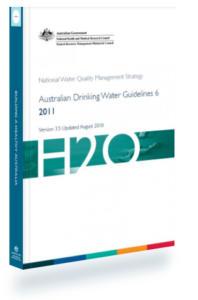Safe Water vs Aesthetics
I received a research paper from one of my colleagues with regards to some recent investigations completed on ice machines. It was relating to the impact of activated charcoal (carbon) filters on ice quality. Ice machines with carbon filters were tested and returned results for pathogenic bacteria. While the ice machines without carbon filters had no detection of microorganisms. Problematic ice machines then had their filters removed and were subsequently retested. The results showed no detection of microorganisms. This research paper stated that carbon filters pose a serious risk factor for ice contamination and should be removed immediately. So, if these filters are having such an impact on ice machines it is quite possible they would influence potable water too?
This poses two questions:
1.) Firstly, why use an activated carbon filter?
Activated carbon filters adsorb natural organic compounds, taste and odour compounds, and synthetic organic chemicals. Ultimately their principal role is to improve the aesthetics (taste) of water.
2.) What effect do carbon filters have on the microbiological safety of water?
The reason why activated carbon filters improve the aesthetics of water is because they break down the chlorine in potable water. Chlorine can have unfavourable taste and odour, with the Australian Drinking Water Guidelines (ADWG) stating that Chlorine has an odour threshold in drinking water of about 0.60 mg/L, but some people are particularly sensitive and can detect amounts as low as 0.20 mg/L. However, Chlorine residual provides protection against contamination from pathogens that may enter the distribution network downstream of the water treatment processes and a minimum of 0.50mg/L is considered to be required to prevent growth of opportunistic pathogens which can proliferate with chlorine (In the absence of insufficient chlorine microbiological proliferation is possible).
Can we sacrifice the safety of water for aesthetics and use carbon filters?
Microbiological management must be the first thing considered, as carbon filters contribute to the increased health risk to consumers (due to the negative impact on the efficacy of disinfection residual supplied by chlorine).
It is a fundamental principle of potable water risk management that disinfection efficacy must never be compromised to improve taste (aesthetics), as the risk associated with microbiological hazards is the most significant to consumers and other end users of potable water. However, Ecosafe International understands the need to consider consumer needs in the provision of safe drinking water. In balancing safe drinking water requirements with consumer demands we offer the following two options.
Removal of the Filter
The 1st option should be considering the need for the activated carbon filter and assessing whether there is a customer demand for aesthetically pleasing water in the first place and educate personnel on the importance of chlorine residual (i.e. minimum of >0.50 mg/L) as a barrier to microbiological contamination using the following recommendations.
If there are complaints, ask questions help to identify whether it’s an individual sensitivity to taste and odour or whether the problem is greater.

- How many complaints?
- Is it an individual or a group of people?
- Is the complaint once off or ongoing?
- Is it at one machine or outlet or many?
Make people aware of the related risks and how they are prioritised and managed when taste and odour changes because of an increase of chlorine residual. These concerns related to changes in aesthetic quality can also be explained by stating the position specified in the ADWG that disinfection effectiveness should never be compromised in an effort to improve aesthetic quality.
In the health and aged care setting, where there are immunocompromised patients, being supplied from ice machines or outlets with carbon filters, then disinfection efficacy can’t be compromised to improve the aesthetics. When dealing with vulnerable members a strict emphasis must be placed on microbiological safety.
Maintain the Filter
Those in the position of being expected to maintain carbon filters, such as in office environments (non-immunocompromised personnel) can still keep filters, however, must consider ways in which to limit the chance of pathogens proliferating within the distribution network. Some of these may include:
- Installation of carbon filter as near as possible to the outlet or ice machine thus limiting the area of possible contamination (and in a cool and dry area to minimise conditions suitable for proliferation of opportunistic pathogen growth)
- Change the activated carbon filter on a regular basis (based on manufacturer requirements).
- Regular disinfection of external and internal components of ice machines / outlets (water coolers and the like), which should include flushing makeup / internal lines without filters to obtain at least 0.50mg/L of free residual chlorine.
- Regularly inspect and service the ice machine based on manufacturer recommendations.
- Consider the need to monitor for microbiological contaminants within the ice machine and/or outlet to verify that microbiological pathogens are not proliferating downstream of the activated carbon filter.


